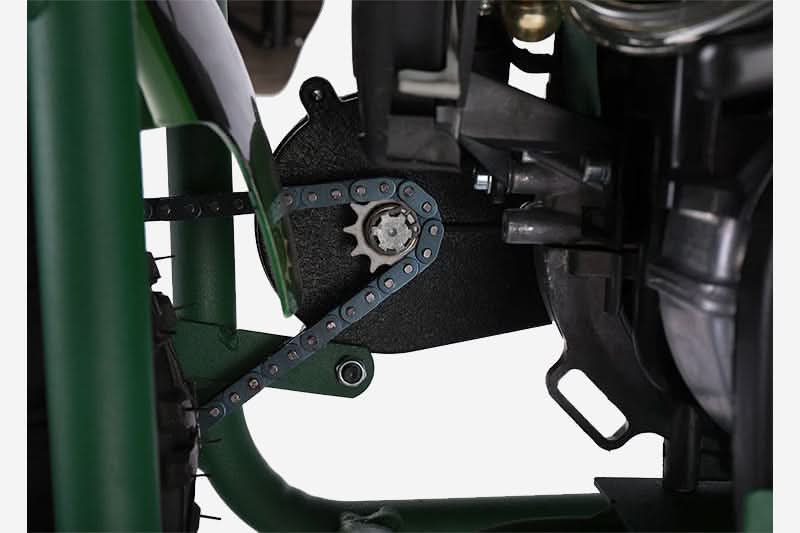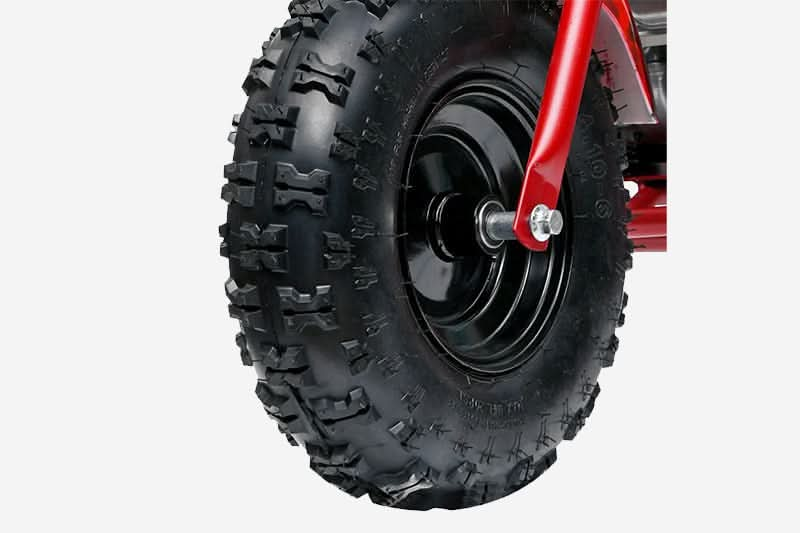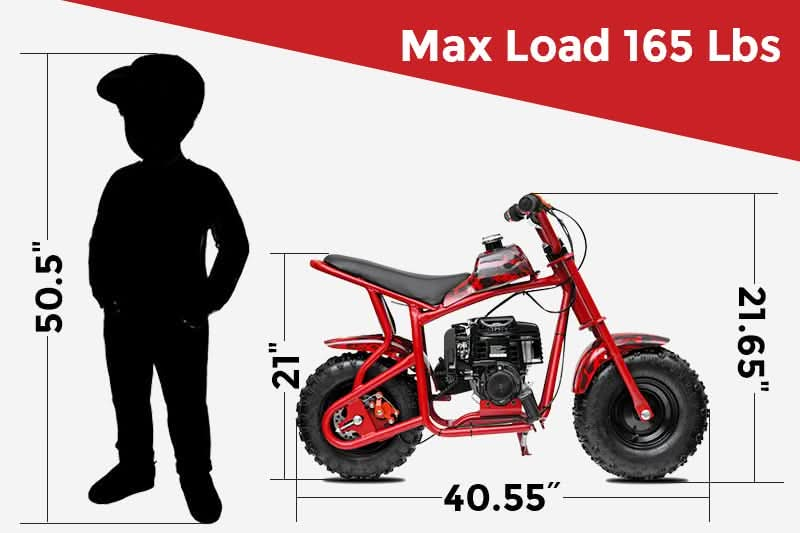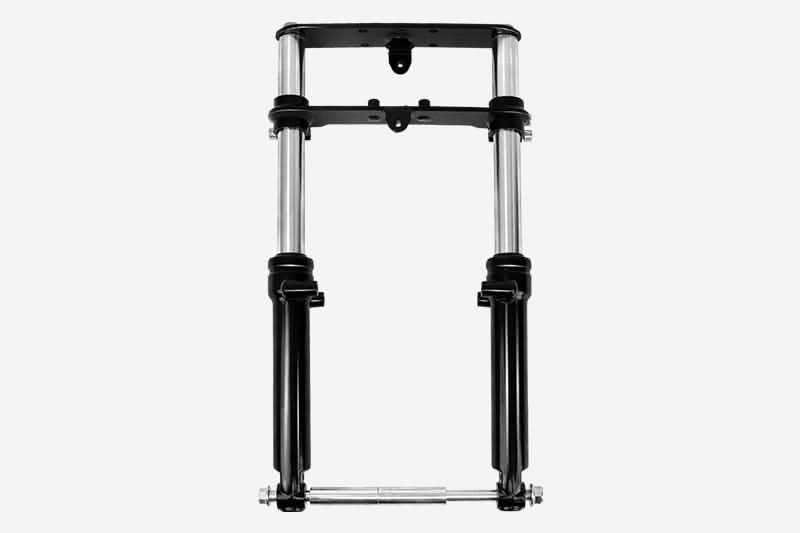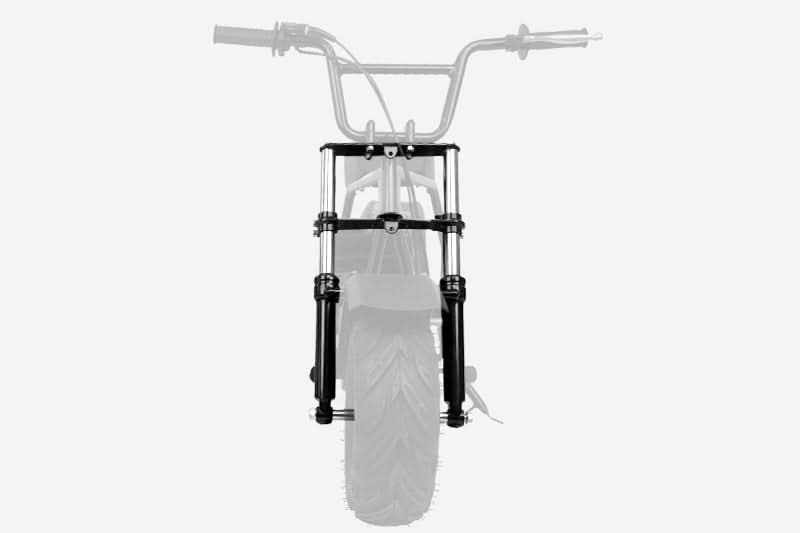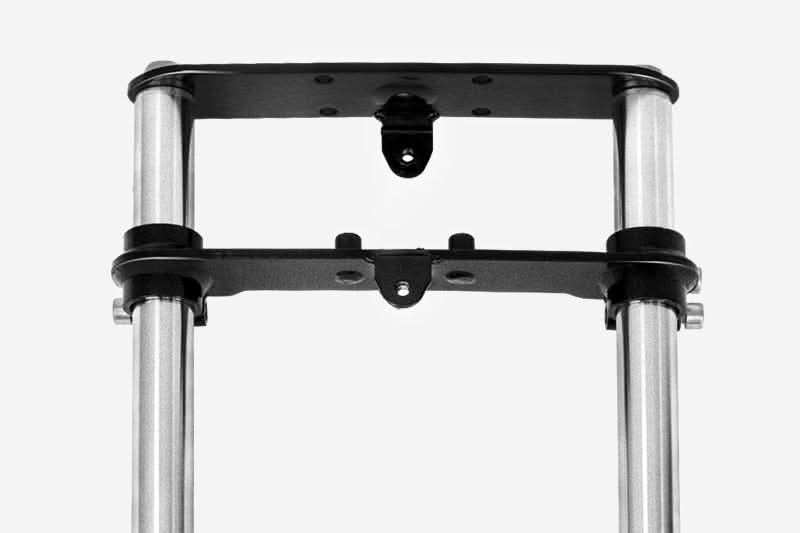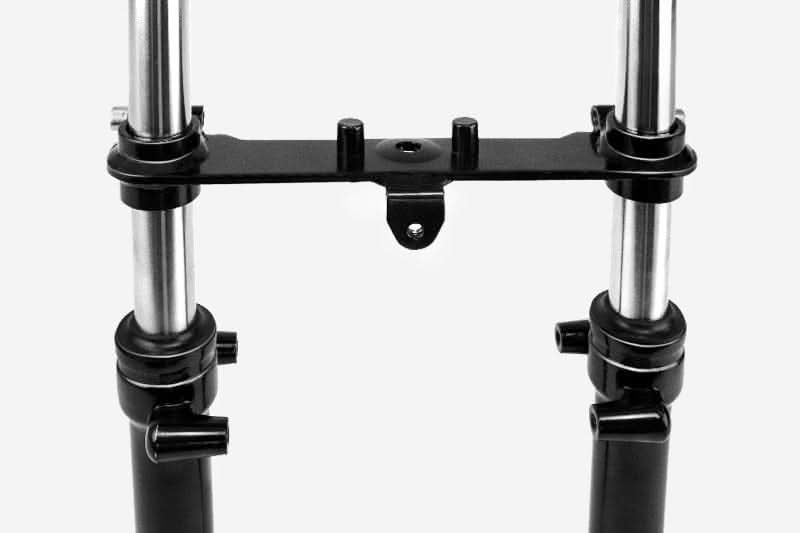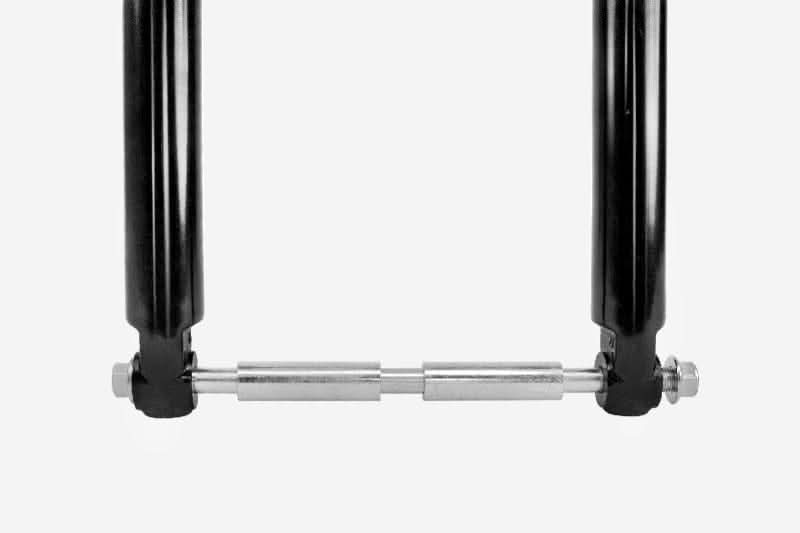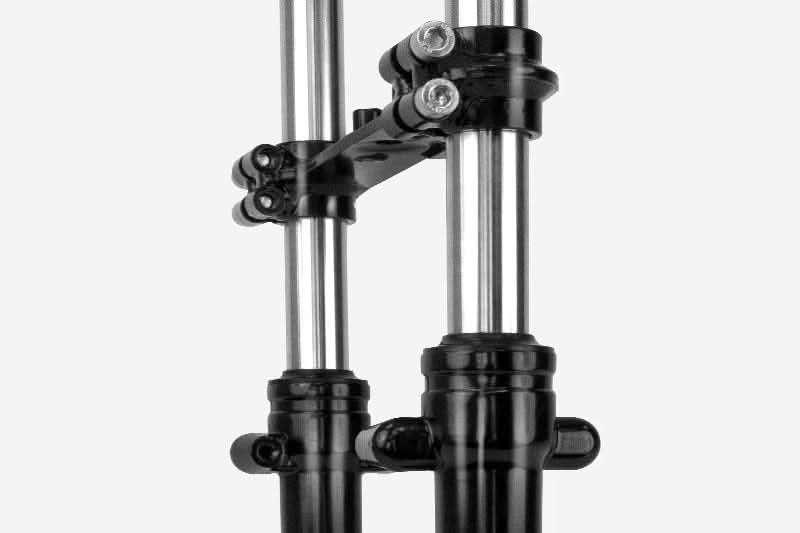Is Your Kid Prepared for Dirt Bike Riding
Finding a balance between riding dirt bikes and reading books is not impossible. As a parent, you want to balance your child's love for riding dirt bikes and their passion for reading books. In this blog post, we'll explore the essential factors to consider to ensure your kid is prepared for dirt bike riding.
Age and Physical Ability
When considering introducing your child to the world of dirt bike riding, it's crucial to consider their age and physical ability. Kids Dirt bikes, designed specifically for kids, are available in various sizes and power levels to ensure a safe and suitable riding experience.
Firstly, ensure that your child is of the appropriate age to understand and comply with safety rules associated with dirt bike riding. Manufacturers typically provide age recommendations for their dirt bikes for kids, considering the complexity of controls and the physical demands of riding.
Secondly, assess your child's physical strength and endurance. Riding a dirt bike requires maneuvering the bike effectively, controlling the throttle, and maintaining balance. Kids dirt bikes are designed to be lightweight and manageable for younger riders, making it easier for them to learn and build confidence.
By considering both age and physical ability, you can choose the right dirt bike for kids that matches your child's capabilities, ensuring a safe and enjoyable riding experience.
Safety Awareness and Sense of Responsibility
Safety awareness and a sense of responsibility are vital for riding dirt bike for kids, especially with more powerful machines like gas dirt bikes designed for older youth riders. Ensuring that your child understands and values the safety aspect of riding is crucial for their well-being.
Firstly, emphasize the importance of following safety rules and wearing appropriate protective gear such as helmets, goggles, gloves, and boots. Teach your child about the potential risks and hazards associated with riding, and encourage them to develop a responsible attitude towards their safety and the safety of others.
Secondly, assess your child's sense of responsibility in maintaining and caring for their dirt bike. Regular maintenance, such as checking tire pressure, inspecting brakes, and performing routine oil changes, is essential for safe and reliable operation. Teach your child these maintenance tasks and instill a sense of pride and ownership in taking care of their youth dirt bike or the gas dirt bikes.

Riding Dirt Bike Skills and Experience
When evaluating your child's readiness for dirt bike riding, it's important to assess their riding skills and experience, especially when considering more advanced models like youth dirt bikes. Riding skills encompass various aspects such as balance, control, turning, and maneuvering on different terrains.
Firstly, evaluate your child's balance and coordination. Riding a dirt bike for kids requires maintaining stability while navigating uneven surfaces. Look for good balance and body control in your child; these skills are fundamental for safe and enjoyable riding experiences.
Secondly, assess their control of the bike. Can they effectively manage the throttle, brakes, and clutch (if applicable)? The ability to control speed, accelerate, and decelerate smoothly is crucial for maintaining control and avoiding accidents.
Next, consider their experience level. Have they ridden a dirt bike before, or are they new to it? If they have prior experience, evaluate their proficiency and comfort level. If they are new, consider enrolling them in a training program or seeking professional instruction to ensure they learn proper techniques and safety protocols.
Lastly, observe their ability to navigate turns and adapt to different riding conditions. Riding off-road involves encountering obstacles, making quick decisions, and adjusting to varying terrains. Assess your child's adaptability and response to different challenges.
By carefully assessing your child's riding skills and experience, you can make an informed decision regarding the appropriate dirt bike for kids or youth dirt bikes models and identify areas where they may need additional training or practice.
Interest and Enthusiasm
One essential factor to consider when determining if your child is prepared for dirt bike riding is their interest and enthusiasm for this exhilarating activity. Their passion for kids dirt bikes or youth dirt bikes can greatly impact their motivation to learn, improve, and overcome challenges.
Firstly, assess your child's level of interest in dirt bikes. Do they show genuine excitement when they see others riding or talk about dirt bikes? Their curiosity and eagerness to learn more about the sport can strongly indicate their readiness.
Secondly, consider their willingness to invest time and effort into learning and improving their riding skills. Riding dirt bikes requires practice, perseverance, and a commitment to continuous learning. If your child demonstrates a strong drive to develop their abilities and willingly invests time into practicing and honing their skills, it's a positive sign of their readiness for dirt bike riding.
Lastly, consider their interest in the dirt bike culture and community. Engaging in the dirt bike community can provide opportunities for learning, mentorship, and camaraderie. If your child shows enthusiasm for being a part of this community and embraces the values and spirit of dirt biking, it can enhance their overall experience.
By considering your child's interest and enthusiasm for dirt bike riding, you can gauge their level of commitment and dedication. When their passion aligns with the challenges and rewards of this activity, they are more likely to thrive and enjoy their journey with kids dirt bikes or youth dirt bikes.

Local Laws and Regulations
Understanding and adhering to local laws and regulations is crucial when considering dirt bike riding, especially for young riders on kids dirt bikes or more powerful gas dirt bikes. Familiarizing yourself with your area's specific rules and requirements is essential to ensure compliance and safety.
Research the age restrictions and licensing requirements for dirt bike riders in your locality. Some regions may have minimum age limits or require a specific license or permit for riding off-road vehicles. Ensure that your child meets the legal criteria to operate a dirt bike.
Be aware of any restrictions on where dirt bikes can be ridden. Certain areas may have designated off-road trails, tracks, or parks for dirt bike riding. Ensure you understand the permitted locations and any access requirements to avoid legal issues.
Consider any regulations regarding safety gear. Many jurisdictions mandate using helmets, goggles, protective clothing, and other safety equipment while riding. Make sure your child is equipped with the necessary gear and that it meets the local safety standards.
Be mindful of noise regulations. Some areas have noise restrictions for off-road vehicles, including dirt bikes. Check if specific decibel limits or quiet hours need to be followed to minimize disturbances to the community.
By familiarizing yourself with the local laws and regulations pertaining to kids dirt bikes and gas dirt bikes, you can ensure your child rides within the legal framework, promoting their safety and the respect of others in the community.
Financial Affordability
The financial aspect is crucial when evaluating your child is preparedness for dirt bike riding. The costs associated with owning and maintaining a dirt bike for kids or gas dirt bikes should be considered to ensure a sustainable and enjoyable experience.
Firstly, assess the expenses of purchasing a dirt bike. The price range can vary depending on the brand, model, and features. Research and compare options to find a bike that fits your budget while meeting the necessary quality and safety standards.
Secondly, consider the costs of insuring the dirt bike. Insurance coverage protects in case of accidents, theft, or damage. Obtain quotes from different insurance providers and factor this into your financial planning.
Don't forget to include the costs of additional safety equipment such as helmets, goggles, gloves, and protective gear. These items are essential for your child's safety and should not be overlooked.
Enough Time
Dirt bike riding requires practice and dedication. Assess whether your child has enough time to practice and improve their dirt bike riding skills. Regular practice is essential for building confidence and enhancing their abilities. Additionally, consider whether your child is willing to invest time in properly maintaining and cleaning their dirt bike to ensure its longevity.
Conclusion
Preparing your child for dirt bike riding involves considering multiple factors. Age, physical ability, safety awareness, riding skills, interest, local laws, financial affordability, and time availability are crucial in determining if your kid is prepared for this adventurous activity.
By considering these factors and ensuring your child meets the requirements, you can help them embark on a safe and enjoyable dirt bike riding journey.
Remember, introducing your child to dirt bike riding is a significant decision. It's important to prioritize safety, provide proper training and guidance, and foster a positive attitude towards responsible riding. Doing so can create a fulfilling and exciting experience for your kid.








































